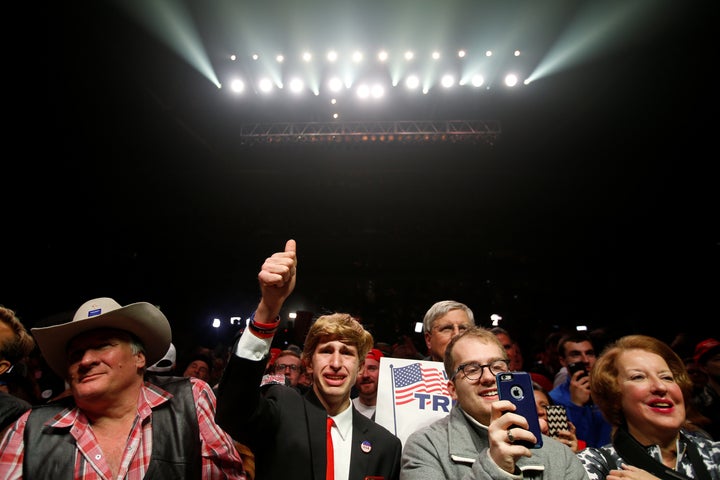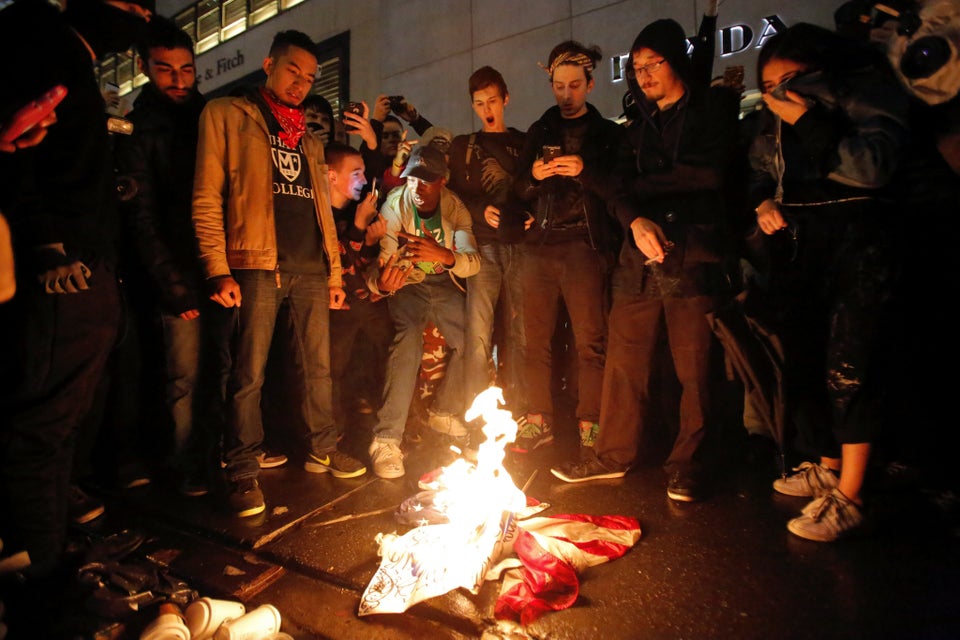
The shock of President-elect Donald Trump’s triumph is reverberating around the media world, with editorial columns ranging from disbelief (“Absorbing the Impossible”) to despair (“A prayer for America”). In the end, betting markets, major polls, statisticians and pundits were wrong in predicting a Trump loss, with most sources putting Hillary Clinton’s chances well above 80 percent.
These professionals missed the signs because they were on the wrong road altogether. To understand Trump’s rise and success, we must look beyond ideology or a populist “backlash” against elites to something much deeper. Our research suggests that the Trump phenomenon, far from being a once-a-century outlier, taps into something much more primal and profound.
Trump’s campaign capitalized on a basic scientific principle that manifests time and time again in our cultural psychology research: When people perceive threats, they show a greater desire for tight rules and for strong leaders who say they can create social order and coordination. Leaders who have strong autocratic tendencies, like Trump, fit this bill. Trump wasn’t just a strong personality; he fostered a culture of threat and fear and in doing so, rode the wave of a changing culture of a significant portion of the American population.
Through a study in April, we confirmed this pattern in the current election cycle. In a nationally representative sample, the strongest Trump supporters were those who felt that America was under grave threat and believed that the country needed tighter rules and less tolerance toward anyone who seemed “un-American.”

This is known in psychology as cultural tightness ― the desire for strong rules and punishment of deviance, which increases when groups feel they are under threat. Trump capitalized on the psychology of cultural tightness to uncanny effect. Over the past year, social scientists have tried to account for Trump’s stunning rise in the polls with a variety of tools, one of which was a measure that tapped people’s desire for authoritarianism. Yet our survey found cultural tightness to predict Trump support with 44 times the power of people’s preference for authoritarianism.
With this kind of predictive power, cultural tightness has the potential to “rewire” America’s political map. Indeed, statewide difference in tightness correlates with the Trump vote share in the election at a remarkably high rate ― about the same strength as the relationship between height and weight in individuals.
The insights from our research suggest a formula that accounts for the emergence of “Trump’s tight culture.” The formula is easy enough to understand and even though we apply it to current-day America, it has played a role in many of history’s most extreme and dangerous political movements, from Adolf Hitler’s rise in Germany to Bashar Assad’s rule in Syria. Here are the essential elements:
1. Create an atmosphere of threat and fear.
Americans were afraid before Trump, but Trump distorted this fear through an onslaught of dark language and insidious insinuations. Whether it was the so-called Islamic State, Syrian refugees or Mexican immigration, Trump validated and magnified many Americans’ superstitions about the threats that lurk outside of their control. He then scapegoated groups like Muslim Americans in order to assign blame for the fear that he invoked.
2. Pander to the vulnerable.
Trump strategically targeted those who already felt threatened: white blue-collar Americans who felt that immigrants and Washington insiders undermined their privilege and their values. The success of Trump’s strategy was clearly evident in the presidential exit polls: While Clinton handily won among voters who prioritized the economy and foreign policy, Trump swept those who prioritized terrorism and immigration.
3. Attack existing civil institutions.
As Trump warned of doom and disaster, he simultaneously attacked the institutions that have been built to maintain order in society. These attacks were ranged widely, targeting the Trans-Pacific Partnership, the Iran deal, the Federal Election Commission and the Federal Reserve System. Trump even undermined the principles of democracy by refusing to commit to the outcome of the election at the final presidential debate. This rejection of established institutions fueled Trump’s image as a leader who wasn’t accountable to the Washington elite.
4. Convince voters that you are the only person who can lead the revolution to restore order.
With each new attack and each new dark prediction, Trump sent a clear-cut message: he was the only one prepared to protect America. To cultivate this image, Trump intentionally cycled through campaign staff and eschewed advisors, even contradicting his own running mate during a national debate. Each of these moves reinforced Trump’s position that he alone was capable of maintaining social order in America.
“Trump swept voters who prioritized terrorism and immigration.”
Trump’s appeal is not exclusive to America. Cultural tightness was a driving force when Britain voted to leave the European Union this past June and when the Law and Justice Party won Poland’s parliamentary elections last year. Trump is a symptom of a larger principle that echoes across human history: threats change cultures, leading to stronger rules, obedience to autocratic leaders and ― at worst ― intolerance.
Our research can’t predict Trump’s future, but it does suggest that as long as Americans feel under threat, they will flock to leaders like Trump who peddle in fear and the threat of a dark future.
Moving forward, we are left wondering: Did Trump merely exploit the formula to get elected and is now truly ready to govern responsibly? Or, believing his own threat narrative, will he tighten America even further to levels unseen in our history? We can only hope that he will adapt his tone to better suit his position of immense democratic responsibility.
